
4 minute read
THE NEW 9-TO-5
Tips for making a home office work for you
Not to be confused with WTH (an acronym for the collective mood right now), another acronym, WFH, is suddenly omnipresent, with sheltering in place making working from home the new normal. Our home offices—both the ones we've had and the makeshift ones we've had to create quickly—are now essential for remaining productive. We consulted with Jonathan Puleio, a certified ergonomist and Global VP of Consulting for Humanscale (humanscale.com), and Stephanie Kennedy, National Retail Market Manager for Room & Board (roomandboard.com), to get their advice for setting up effective, comfortable and inspiring WFH spaces.
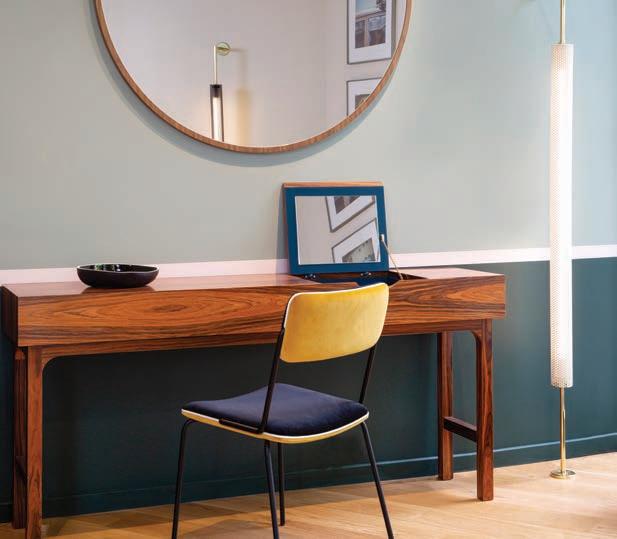
A workspace with Bulle Mirror ($1,069), Le Roch Console ($2,139), Double Jeu Chair ($529), and Pol Lamp ($1,296) by Maison Sarah Lavoine (maisonsarahlavoine.com).
Photo courtesy of S2H Communications.
THE CHAIR: Puleio suggests a comfortable ergonomic chair, which can lead to an uptick in alertness and blood flow. Also ideal is a chair that automatically adjusts to the sitter and eliminates the need to fumble with knobs and levels as tasks and positions change throughout the day (see Humanscale's Liberty chair). To better comfort and ergonomics, Kennedy recommends adding a footstool.
THE DESK: Before buying a desk, Kennedy says that it helps to have an idea of the amount of workspace your equipment takes up. "We often think the wider the desk the better, but it's incredible how much more functional a deeper surface (30" versus 24") can be when you do a lot of typing on a daily basis."
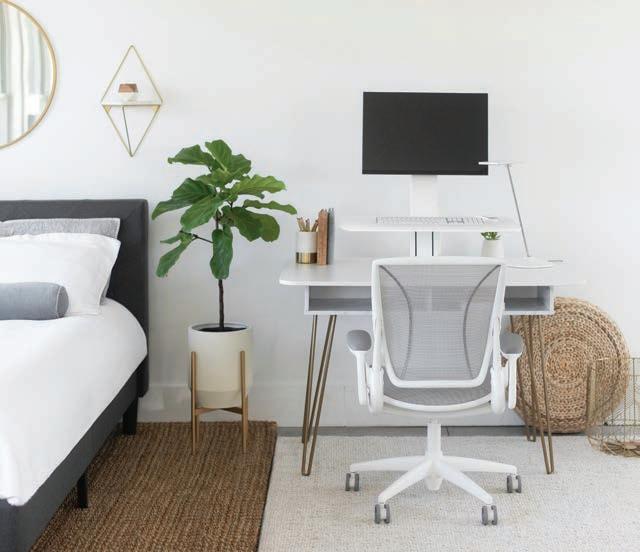
Humanscale QuickStand Eco Desk (from $419) and Diffirent World Chair (from $899; humanscale.com)
THE LIGHTING: Natural light in the workplace is known to have a positive influence on productivity, creativity, and mood. Still, it is just one of many light sources needed for an optimal working environment. With the rise of backlit screens and open floor plans, task lighting, as a supplement to natural or overhead lighting, is necessary for an optimal work experience. "To avoid ocular discomfort that can negatively impact one's performance as well as their overall health and well-being, it's important to find proper task lighting that casts a wide footprint, is glare-free and offers a single shadow, and that is smooth and easy to adjust as needs shift throughout the day," says Puleio. Kennedy added that a good rule of thumb for any room is to try and incorporate three light sources.
BOOKSHELVES: Kennedy said that containing clutter is critical. "Organized shelves are a great opportunity to elevate the style of a room while enhancing their functionality."

Foshay bookcase from Room & Board (from $1,348; roomandboard.com)
MONITOR ARMS: Though often overlooked, monitor arms can promote a clutter-free workspace and support a healthier, more ergonomic working posture, by eliminating the need to lean in toward your computer monitor to see it better. A monitor arm enables you to pull the monitor closer so you can sit in a healthy posture with your back against the back of the task chair.
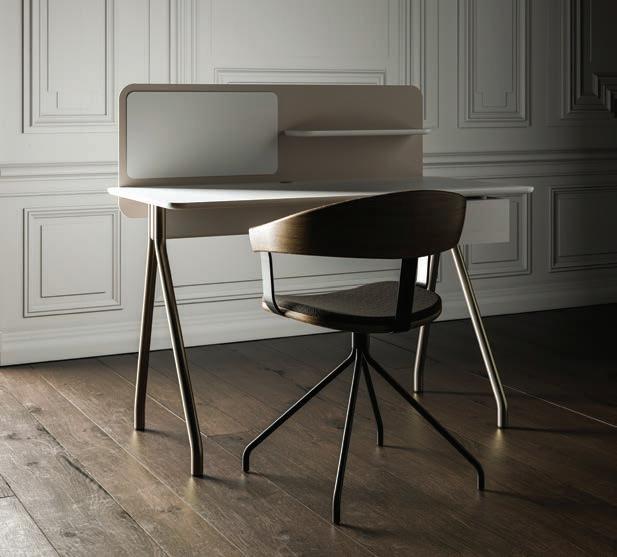
Simple Writing Desk and Essens Chair from HBF (hbf.com)
KEYBOARD TRAY: In the same vein as a monitor arm, a keyboard tray brings the keyboard and mouse closer, improving ergonomics by minimizing the need to lean forward and offering protection from carpal tunnel syndrome, neck and back pain, and other musculoskeletal issues.
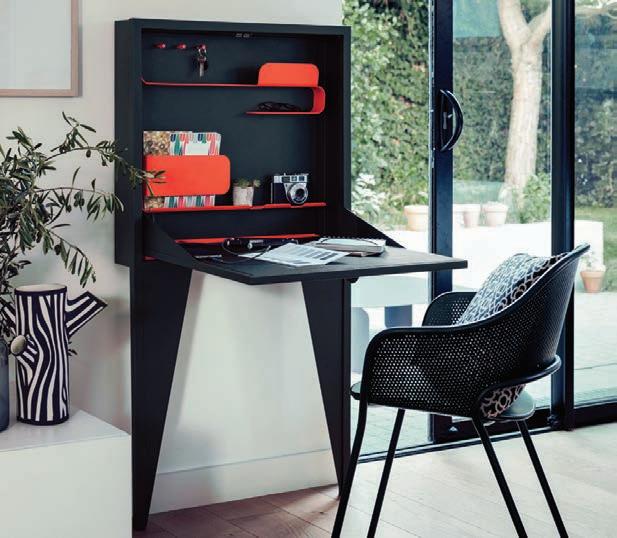
Face á Face Desk by Fermob. Photo courtesy of S2H Communications.
FURNITURE LAYOUT: "More generally, it's about making the most of the area you have to work with and thinking about what's most important to you for your home office/workspace so it's as functional as it can be," said Kennedy. Following design principles applicable to other rooms of the home, she added that the furniture arrangement should have a natural flow that feels comfortable, and in this case, productive. Putting a desk in front of a window takes advantage of natural light and mood-lifting views of the outside, but be sure to leave three-feet behind the desk to pull your chair out comfortably.
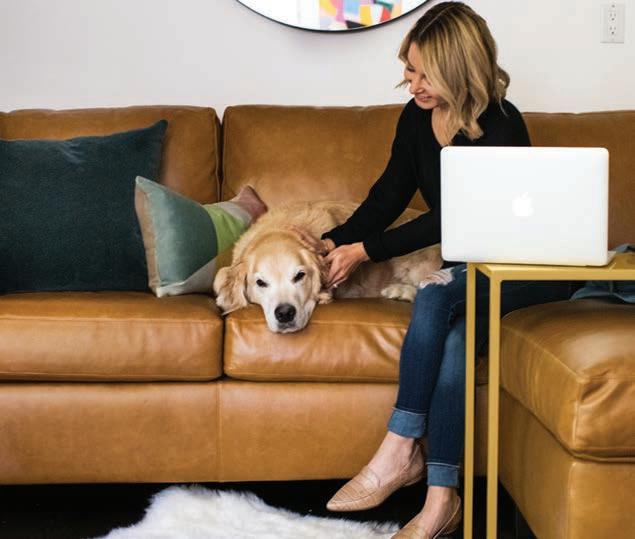
Slim C-Table from Room & Board ($199; roomandboard.com)
For those newly working from home, Kennedy recommended making the transition more tolerable by trying to "replicate" a typical work environment. Set up monitors, phone, wastebasket, and task lighting in the same configuration as their normal office setting.

Farrow & Ball's Broccoli Brown paint on the office walls. Photo by James Merrell courtesy of S2H Communications.
If there’s more than one person working from home, Kennedy said that if space permits, it’s advisable to have designated workstations in different rooms.
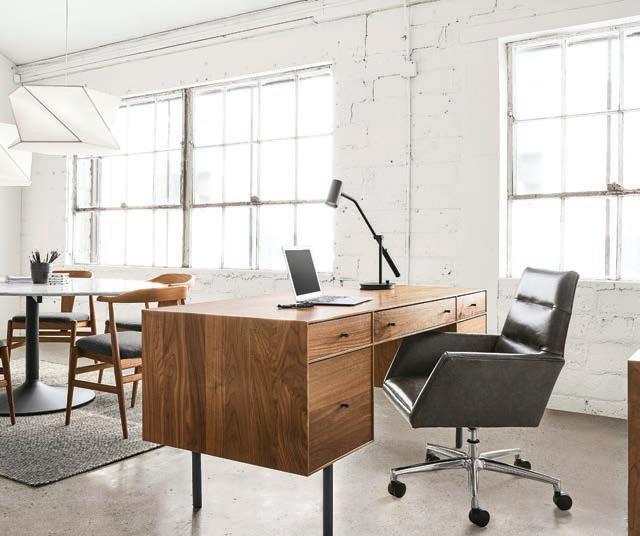
Room & Board Hudson desk with file drawers (from $2,499) and Tenley leather office chair ($1,299; roomandboard.com).
ART: Similar to the clutter that can quickly accumulate on bookshelves, Kennedy said it's also easy to go overboard with art. She recommends limiting focal points to one or two walls for visual clarity.
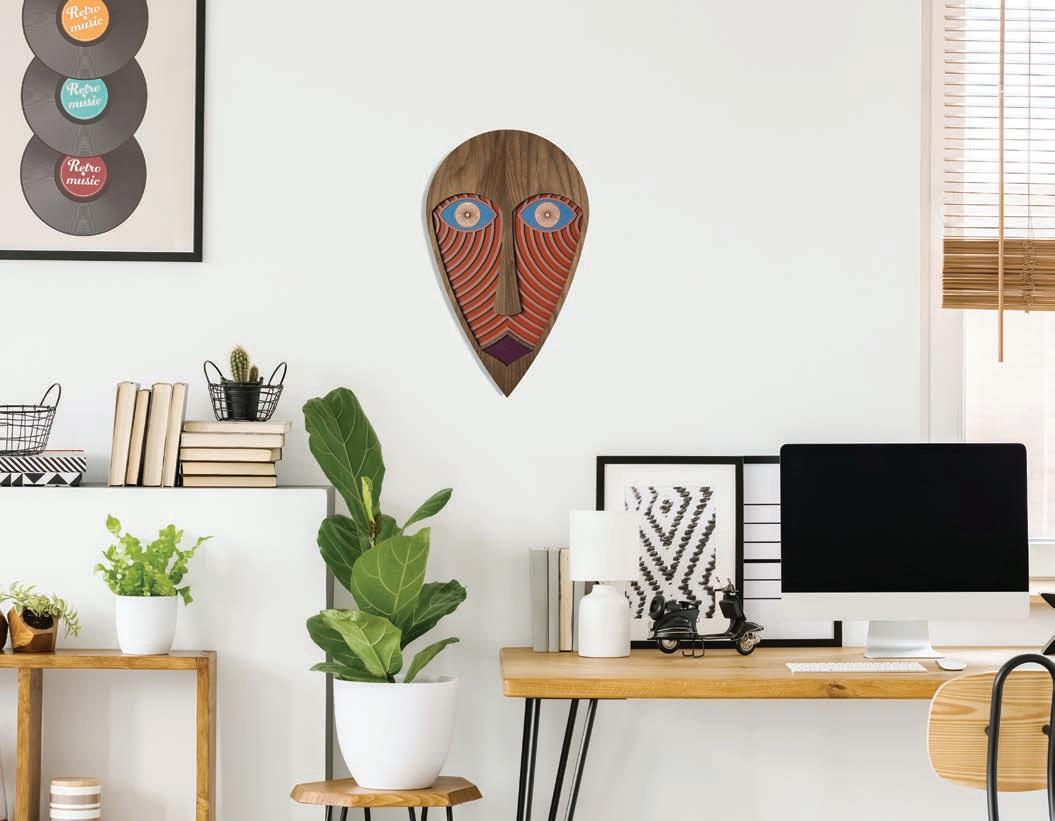
Moderne African #17 Mask by Umasqu. Photo courtesy of S2H Communications.
FINAL THOUGHTS: "Never work from bed!" said Kennedy. While it might seem cozy at first, she emphasized that it's essential for mental and emotional health to have a clear division between work and leisure time. Instead, she said to select furniture you love for a designated workspace.










